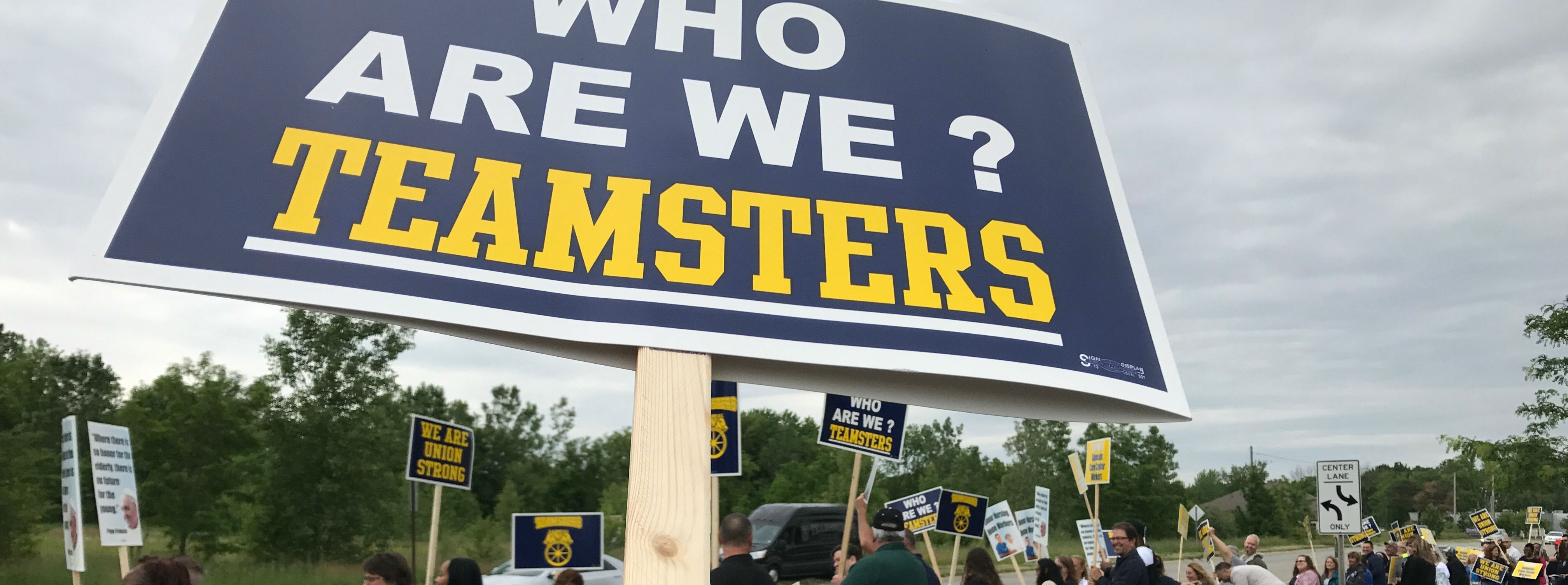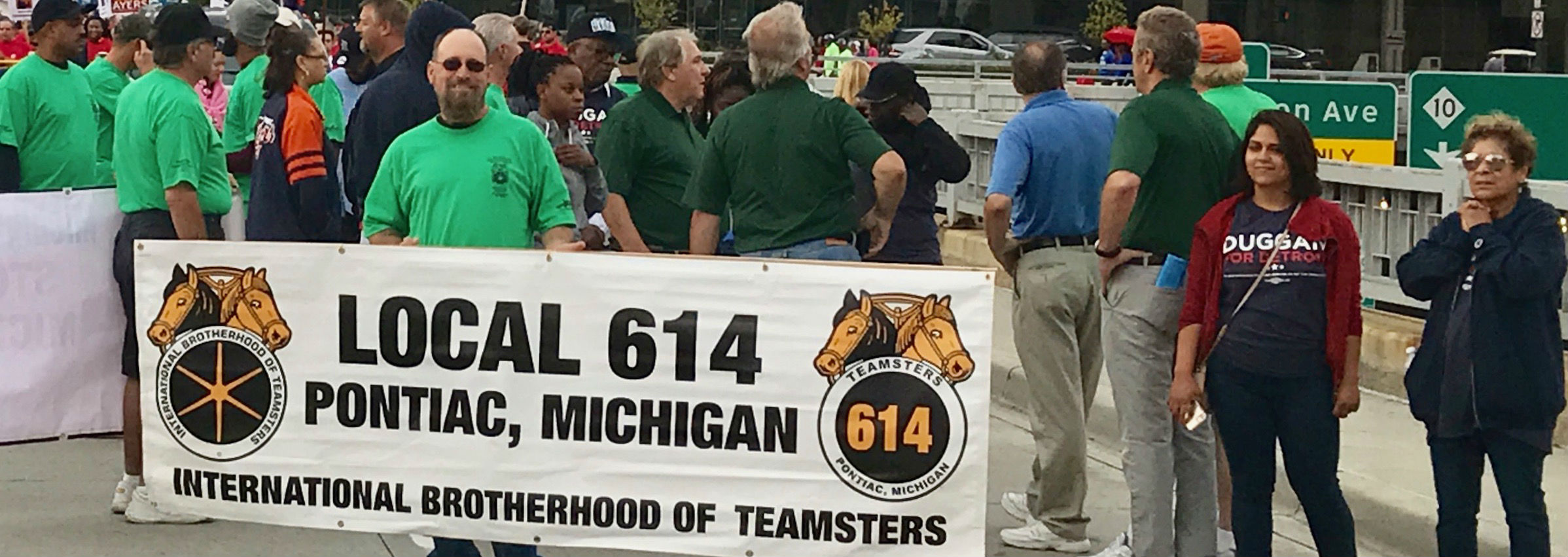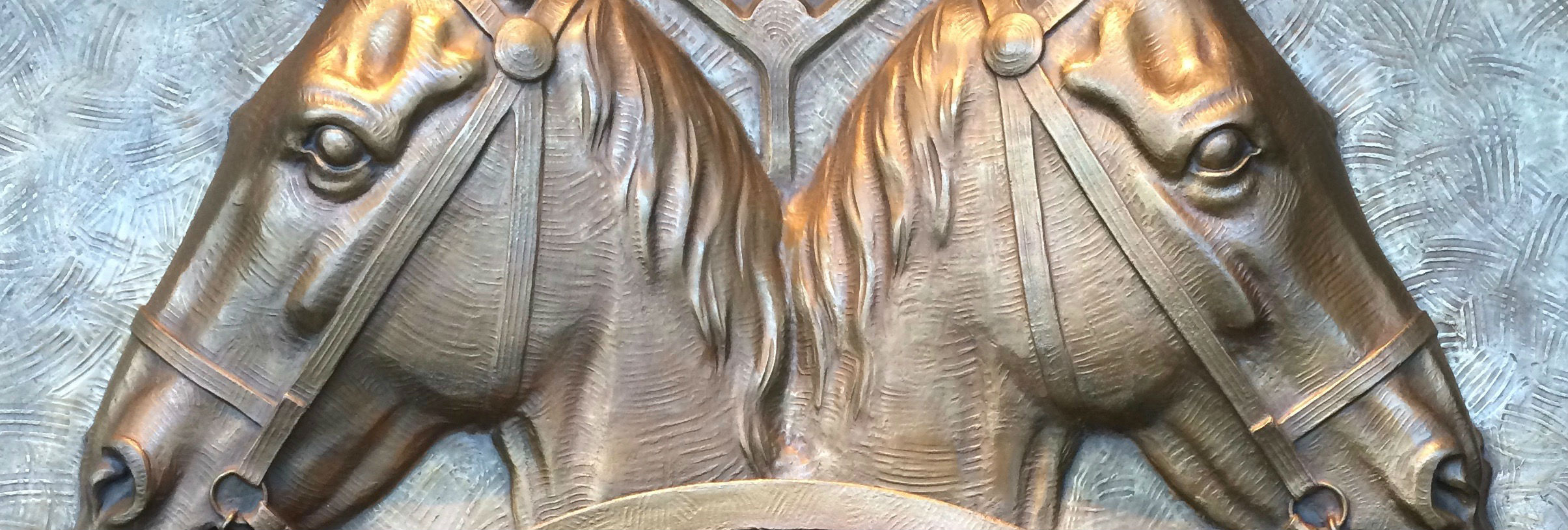| Teamster History Timeline
1903: The International Brotherhood of Teamsters (IBT) is created at a convention in Niagara Falls, N.Y. Cornelius Shea is elected the first General President.
1905: Bloody strike at Chicago-based Montgomery Ward Company lasts more than 100 days, tragically takes 21 lives and costs about $1 million. In the face of this setback, the union realizes changes are needed.
1907: Dan Tobin elected General President. Tobin leads the Teamsters for the next 45 years.
1912: Tobin sets out to organize the fast-growing motorized truck delivery industry.
Teamsters are part of the first transcontinental delivery of goods by motor truck.
1914: Start of World War I brings industrial boom in the U.S., drives Teamster
organizing efforts.
Union members help secure military success by swiftly moving troops and supplies, as well as providing vehicle maintenance and repair expertise.
1916: At the convention, Teamsters proclaim the horse as the heart of the union and as its
symbol.
1918: Teamsters play a crucial role in delivering supplies and medicine during the Great Influenza Epidemic.
1925: Union's treasury reaches $1 million.
1929: Great Depression hits. Jobless rate jumps from three percent to 25 percent.
1933: Depression hits Teamsters locals hard. Membership rolls hit a Depression-era low of
75,000.
1934: Teamsters embrace President Franklin D. Roosevelt. FDR fights for working families, wins passage of a series of legislative initiatives designed to pull the country out of the Depression. FDR relies heavily on U.S. labor leaders, especially Tobin, to make his case.
After historic Teamsters strike in Minneapolis, FDR wins passage of landmark National Labor Relations Act. NLRA codifies workers' rights to collective bargaining and protects workers from management interference or intimidation aimed at union activity.
1935: Teamsters organize over-the-road truckers. Membership nearly doubles to 146,000.
1942: National Conference of Teamsters formed to help the economic and military crises facing the U.S. in World War II.
125,000 Teamsters involved in military operations for the Allied forces.
1947: Taft-Hartley Act passes. The Act amends the NLRA, aimed to restrict and limit labor's influence.
1949: Teamster veterans keep seniority upon return from war, go back to work.
Membership tops 1 million, thanks to organizing in booming post-war industries.
1952: Tobin announces retirement. Dave Beck is elected his successor.
1956: Congress approves the Federal-Aid Highway Act, which creates the Interstate Highway System. Positively impacts American economy, creating new jobs in manufacturing, construction and transportation.
1957: James R. Hoffa elected President; membership stands at 1.5 million.
1964: National Master Freight Agreement is a watershed for the Teamsters. Covers 400,000 members employed by some 16,000 trucking companies. Agreement moves more workers into the middle class than any other event in labor history.
1965: IBT contributes $25,000 to Dr. Martin Luther King's Southern Christian Leadership Conference, the union's largest monetary contribution to a social cause of the time.
1975: Master Agricultural Agreement won by the Western Conference. Dramatically improves wages and conditions for more than 30,000 farm workers employed by 175 separate growers.
1976: Teamsters membership tops 2 million.
1980s and 1990s: Reagan presidency begins era of anti-union policies. Teamsters' membership declines for first time since the depression.
1997: Teamsters' successful strike at UPS sparks resurgence in the labor movement.
1998: James P. Hoffa wins a landslide victory for President.
1999: Landmark national car haul agreement wins the support of 80 percent of the
members.
2001: At the convention, a historic amendment enshrines the concept of "one member, one vote" as a permanent component of the union's constitution.
2003: The International Brotherhood of Teamsters celebrates its 100th anniversary.
2004: Members of the International Brotherhood of Locomotive Engineers (IBLE) join the Teamsters, becoming the Brotherhood of Locomotive Engineers and Trainmen (BLET), the first craft division within the Rail Conference.
Members of the Brotherhood of Maintenance of Way Employes (BMWE) vote to merge with the Teamsters and become the second craft division within the Rail conference.
2005: Teamsters break away from AFL-CIO, joining Change to Win coalition, which includes a total of seven affiliated unions with six million members.
Graphic Communications International Union and the Teamsters join forces. The new Graphic Communications Conference of the IBT represents workers in all craft and skill areas of the printing and publishing industry.
Present Day: The Teamsters continue to build a might army of organizers, working towards greater membership and an increased standard of living for all workers.
|











